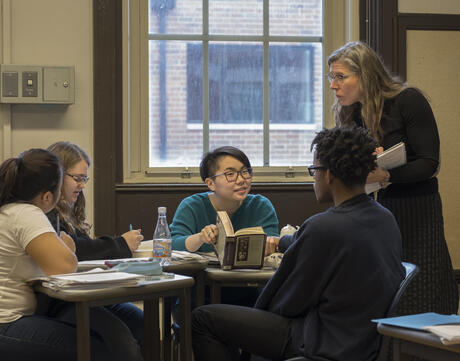
Think Aloud
At a Glance
Language
English — USSubject
- English & Language Arts
- History
Grade
6–12Overview
What Is a Think Aloud?
The Think Aloud strategy helps make visible the many invisible strategies that proficient readers use to monitor their comprehension as then engage with a text. During a “think aloud,” the teacher reads aloud a section of a text, pausing every now and again to reveal what they are thinking about and doing in order to understand what they are reading. This strategy demystifies the process of constructing meaning from a text and helps students see all of the active thinking that leads to comprehension. Think Alouds can be community-building experiences when teachers take interpretive risks in front of their students, especially when they model with texts that they don’t fully understand themselves.
You can model the following reading skills during a Think Aloud:
- Pausing when something is unclear
- Rereading a section of the text
- Visualizing a character, setting, or scene
- Figuring out vocabulary in context
- Posing a question: Did I misread something? Is this a flashback? Did the narrator just change? What does this word mean? What’s the relationship between these characters? What does “it” refer to in this sentence?
- Connecting what you read to something else in the text, another text, or your own experience
- Predicting what might happen next
Procedure
How to Use the Think Aloud Strategy
Unlimited Access to Learning. More Added Every Month.
Facing History & Ourselves is designed for educators who want to help students explore identity, think critically, grow emotionally, act ethically, and participate in civic life. It’s hard work, so we’ve developed some go-to professional learning opportunities to help you along the way.
Exploring ELA Text Selection with Julia Torres
On-Demand

Working for Justice, Equity and Civic Agency in Our Schools: A Conversation with Clint Smith
On-Demand

Centering Student Voices to Build Community and Agency
On-Demand














